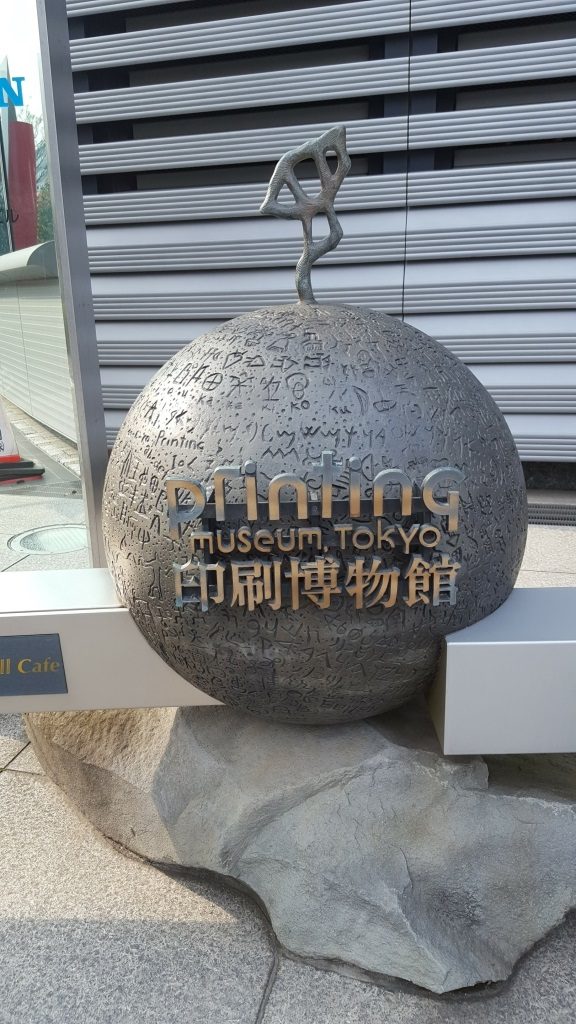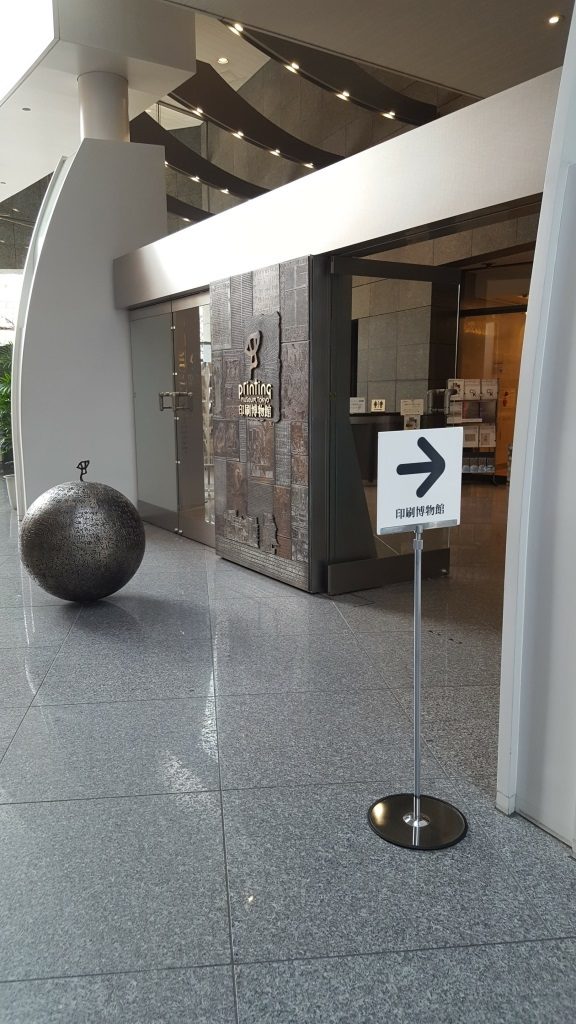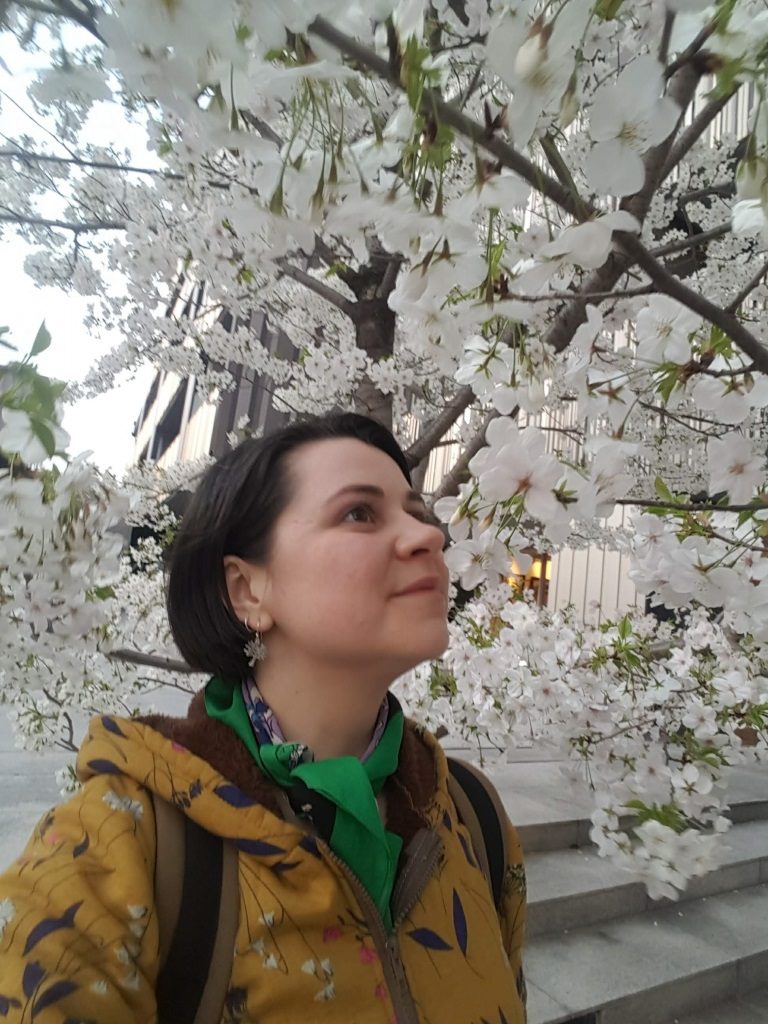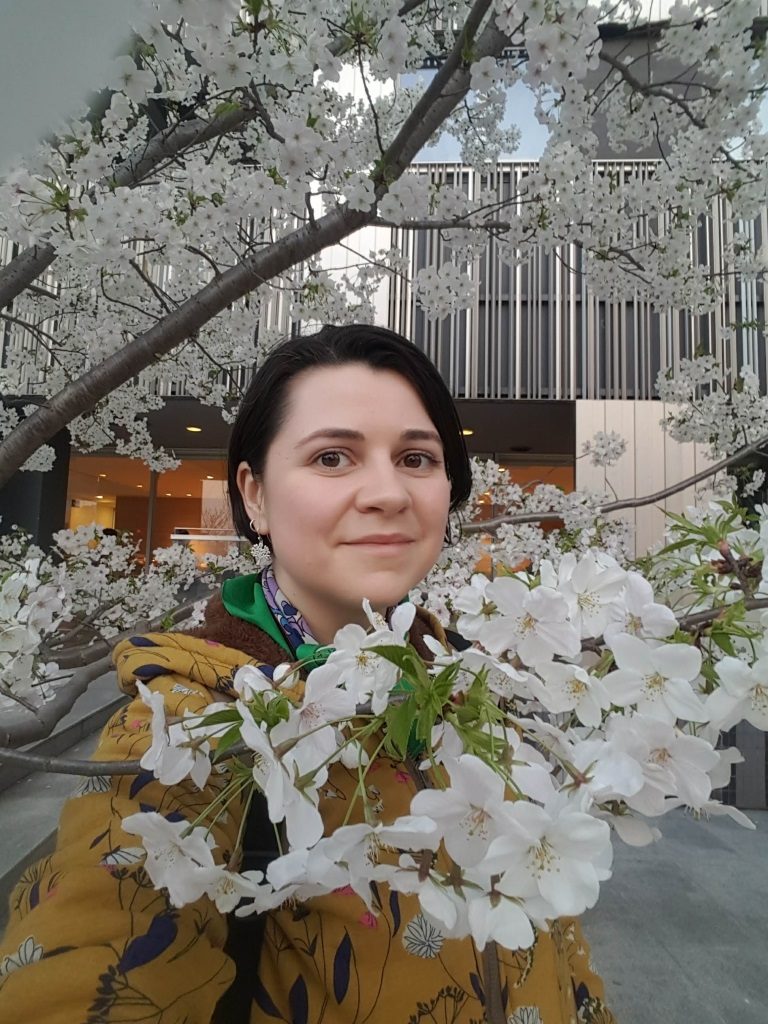So, a confession. Honestly, I thought sakura season in Japan was going to be overhyped. The street I grew up on in England is lined with cherry trees and every spring I would happily kick through the fallen blossom, nature’s perfect confetti swirling around me and settling in my hair like sweet spring snow. In all honestly I love flowering trees, whether it’s the early blackthorn that gives way to hawthorn, the showy flush of magnolias, the cascades of gold that hang from laburnum, or perfumed apple blossoms; they’re all so special. There was no way I thought things could actually be better in Japan. To me it was just national pride talking.
Well, I was wrong.
One of my most pleasant observations in my time here has been the Japanese relationship with trees. Everywhere you go in Japan, you will see trees perfectly and lovingly pruned, their branches delicately coaxed this way and that, leaves trimmed into neat clusters. Old trees that are leaning are supported with bamboo scaffolding instead of being torn down at the hand of litigation wary councils. Bonsai that would cost hundreds in the UK decorate people’s parking spaces. And the sakura in full bloom across Tokyo is worth the hype.
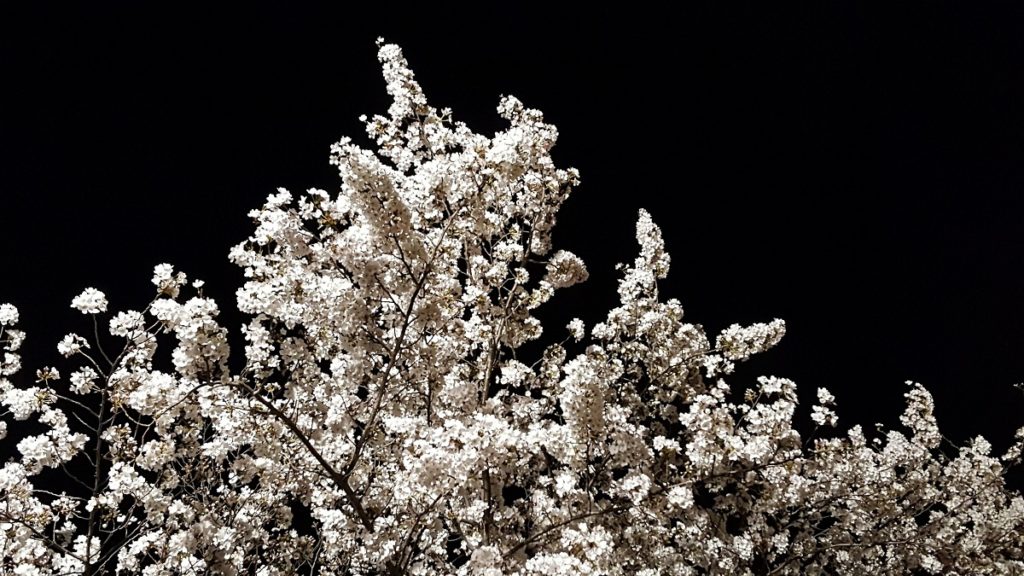
The best 300 yen I spent in my first month in this country was entry to Koishikawa Koen gardens, which you can find close to the Tokyo Dome in Bunkyo. I’m still not entirely sure what Tokyo Dome is, but I know for sure that it includes a rollercoaster, because every few minutes the meticulously manicured harmony of the gardens would be punctuated by a clatter and a screaming chorus. The gardens, it seems like everything else, were built for Tokugawa Ieyasu as private grounds, and they are beautiful. Immediately on entrance I was greeted by a bounty of cherry blossoms glowing in pompom clumps, as if they had been made of tissue paper and clipped there overnight by elves. I would love to visit this garden again through the year and see what other treasures come into their own. Off the top of my head I can remember a plum orchard and signs talking about swathes of irises that grow around the central paddy field, but I’m sure the autumn foliage is something really worth seeing.
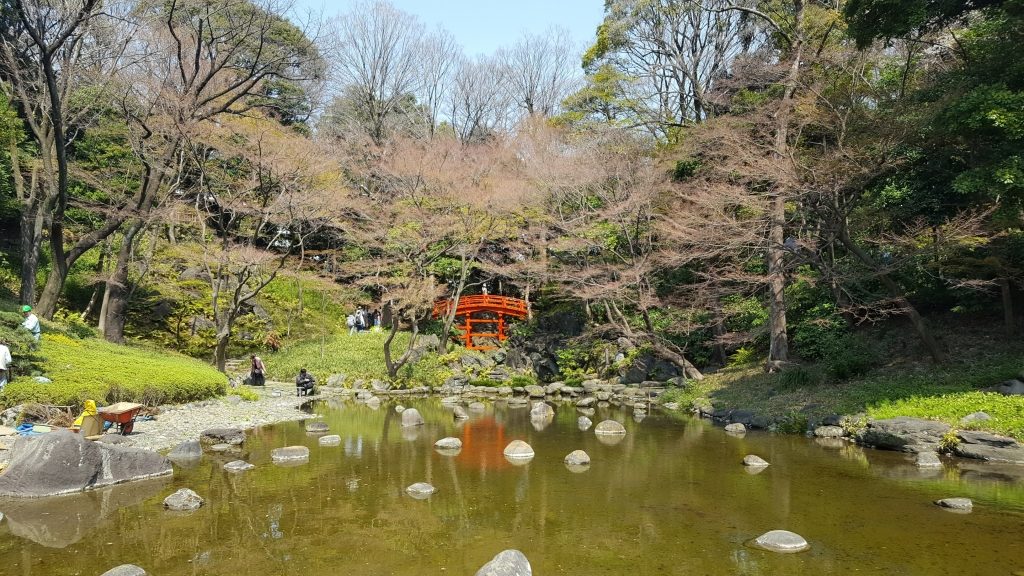
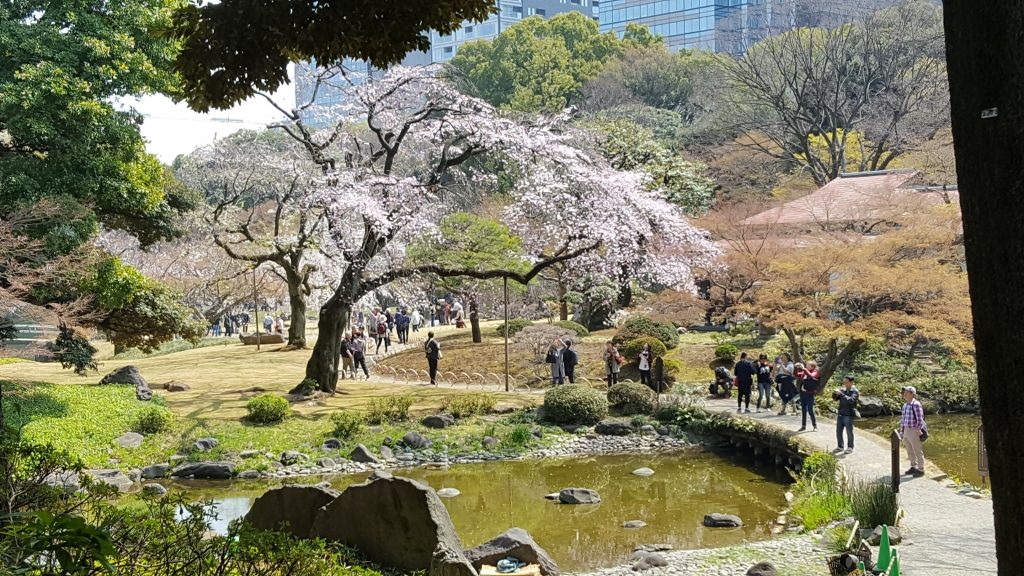
As I wondered through the stone paths, up and down artificial hills and around follies, I watched the birds ruffle around beneath the hedges; little sparrows arguing in flocks and pairs of oriental turtle doves with filigree feathers kicking up leaves in the dappled spring light. The garden is timeless. One gets the feeling that other than the clothes of the people within it and the height of the trees, nothing has changed in centuries. It is the kind of place I could have played pretend for days on end as a child. Hell, I still would as an adult if no one was watching.
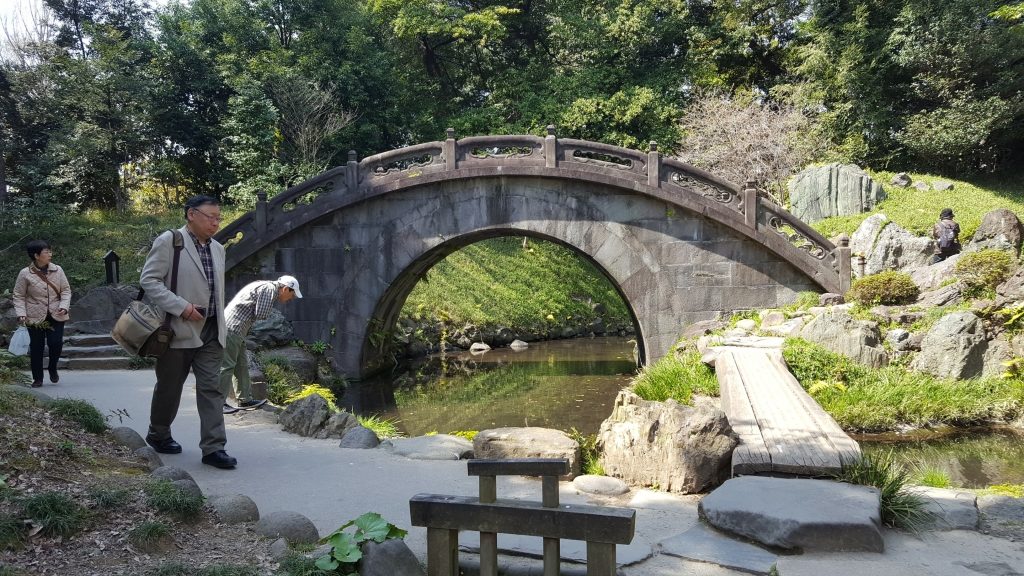
Out in the middle of a lake an island rose up in an impossibly perfect dome, covered in trees sticking out at all angles, while a soft tumble of stones led down to the water where a white egret waded back and forth. Nestled deep in the middle, peeking through the undergrowth, was a little red shrine. A beautiful, almost holy energy radiated off the serene isle and I was desperate to hold onto it, but try as I might, I could not take a photograph that would do the scene justice. It simply too much to try and capture in a shot. I would love to have a go at making a scale model one day.
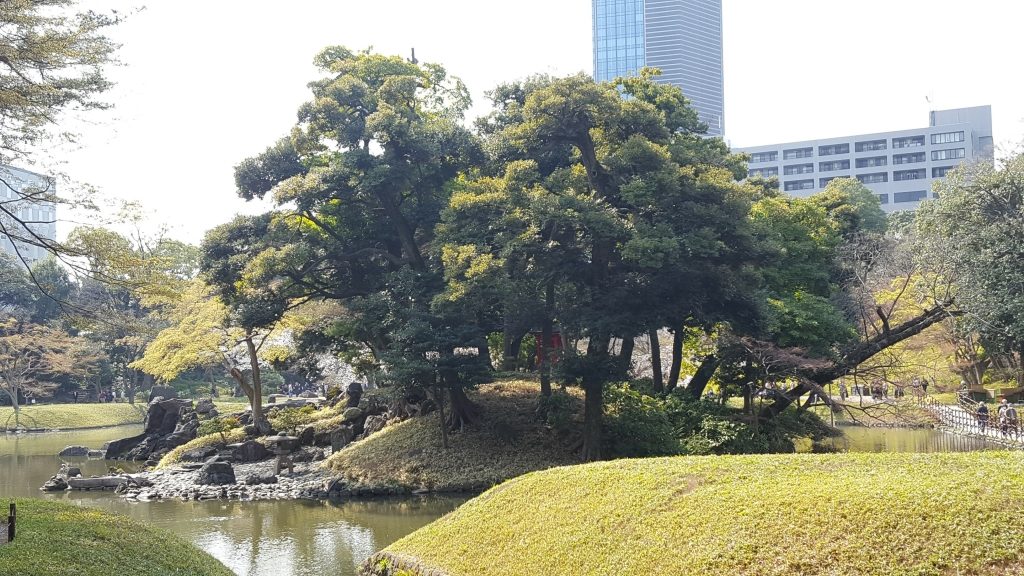
After Koishikawa, I wandered 15 minutes down the road to the Printing Museum. Photography is not allowed inside so I can’t show you it, but if you search online you’ll get some idea of what to expect. The Printing Museum is in the basement of the Toppan Printing Company, and it’s pretty obvious that they maintain it just for corporate show rather than as a main tourist attraction. I think out of everywhere I visited in Tokyo, this was the emptiest. At one point a group of suits were guided in by a bright young woman who seemed genuinely surprised to see another human there. She gave them a whirlwind explanation of ukiyo-e, before briskly whisking them out again. Later, when I asked a gallery attendant for directions to the bathroom I received a 4 person relay escort over the 150 metre journey.
Have a coffee before you go, because you’ll need focus to get through the many detailed exhibitions, but if you’re interested in the history of printing, this museum is well worth a look. There was a comprehensive rundown of ukiyo-e, demonstrations of printing presses, examples of how printing took off in Japan in the rapid industrialisation of the Meiji era; essentially a recount and explanation of how every single printing process works right up to our modern day presses. The art on show- modern prints from contemporary artists alongside 1900s adverts- was pretty captivating, there were videos explaining every process at the push of a button, and even a few interactive exhibitions where it was possible to explore things like how colours mix together to make black ink. I wouldn’t say it was the most engaging museum in the world but it’s well maintained and a huge amount of thought has gone into it, so if you’re at a loss on a rainy day and want to do some learning, I’d say it was well worth a look.
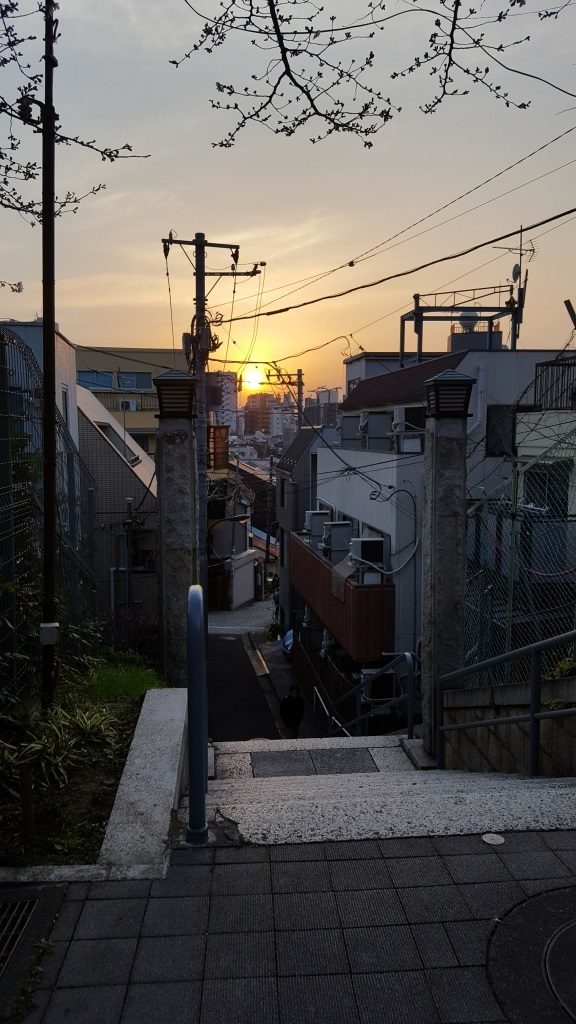
Before I headed back home I went for a wander around a local neighbourhood to enjoy the Tokyo sunset. Outside of an Inari shrine, a huge old sakura stood alone and unbelievably heavy with blossom. I stepped between it’s boughs and let myself breathe in a space surrounded by soft, fleeting beauty. When I was a child, I thought our road’s cherry blossoms were the most beautiful trees in the world.
How happy I am that Tokyo proved me wrong.
Hey there! Do you enjoy reading about my travels? Want to show your appreciation?
Help a wanderer out with a donation- paypal.me/RumadeRu
All contributions are very gratefully received!
